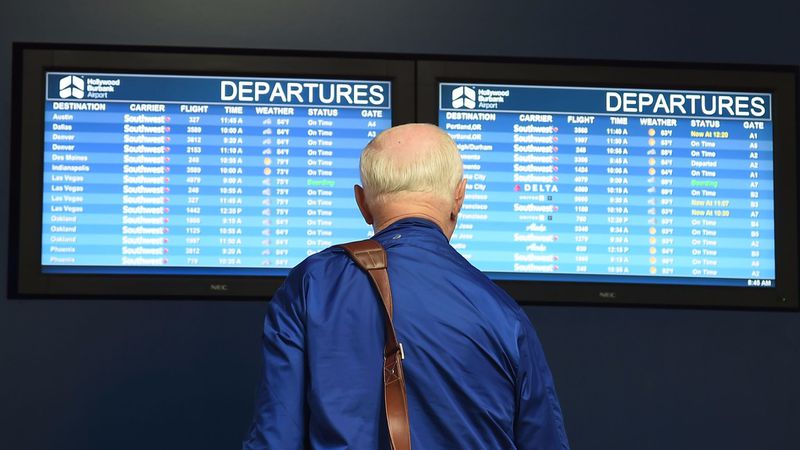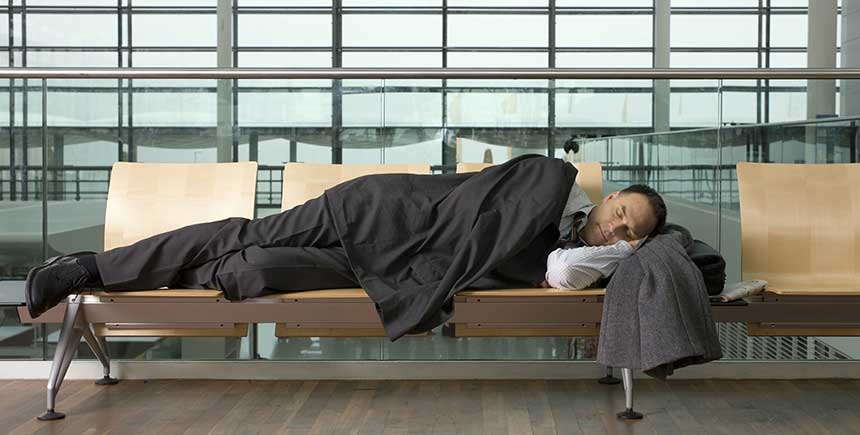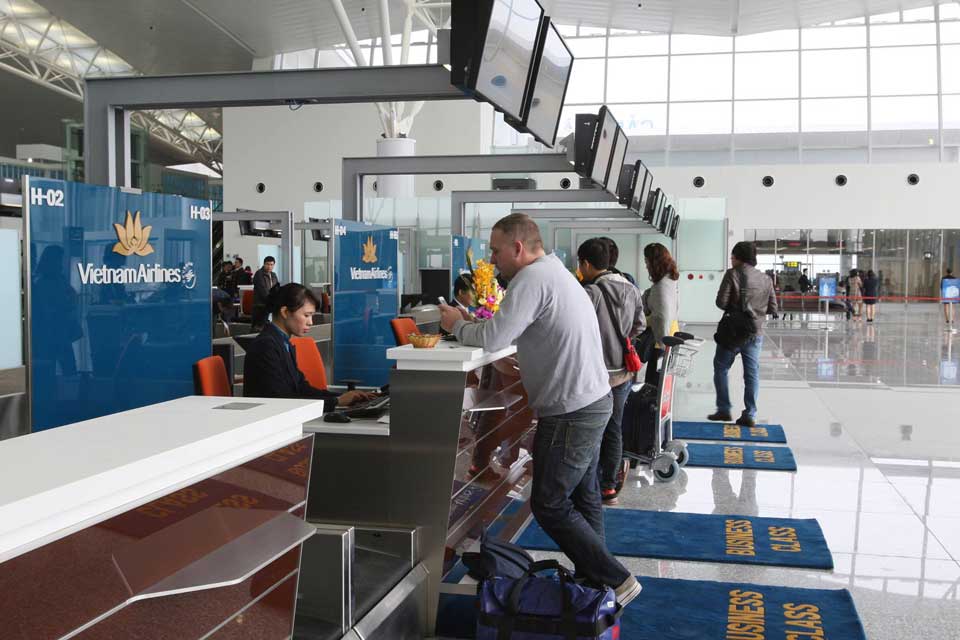Situations for missing a connecting flight might be always out of your control, but there are ways to minimize this happening. Follow our instruction below!
TABLE OF CONTENTS
Once booking connecting flights (or layover flights), make sure to ask the booking agents carefully that how much time you will need during your connection. Normally, the booking agents offer you the connecting flights with short layovers or tight connections.

Generally, domestic flights and short routes operate direct flights, but international flights or long-haul flights often have multi-stops. For example, if you are flying from point A to point C, you have to take a flight from point A to point B and then board on a new flight at point B airport in order to reach point C. The process of waiting and transferring from one plane to another is called Transit or Layover. Transit procedures vary by different airports and airlines but there are still certain things in common, if it is the first time you have a connecting flight, you will probably get confused and have some difficulties.
SEARCH ON EVERYTHING AHEAD OF YOUR TRIP
When booking connecting flights, make sure to carefully check your airport’s minimum time for connecting flights. Through either an airline’s website or a travel agency, it will normally automatically offers you the connecting flights with minimum connecting times without taking into account the adequate time for you to handle all the procedures at the connecting hubs.
If, unfortunately, you miss connection due to the fault of the airline (a technical fault, maintenance, etc ) and you are booked onto a "through ticket" (one ticket for the entire journey) then it is the airline's responsibility to help you book another flight. If you miss the connection through fault of your own or the two flights are on separate tickets, then the airline is under no obligation for a missed connection as well as help you re-book a new ticket.
Does the airport have construction going on? How big is the connection hub? Is your next flight on a different airline? Do you have to go through extra security, immigration, and customs for a layover flight? Do you have to change terminals? How and how long to change terminals? Do you need to check your baggage again? Is your connecting flight the last flight of the day for that airport? – Try to take into account all these questions to decide how much time you will need for a layover flight. For recommendation, allowing yourself at least a 60-minute layover for domestic flights and a three-hour layover time for international flights to be stress-free, even longer layover if you require special assistance at the airport.
In case the connecting time is too long, the airlines may arrange for passengers to stay at hotels waiting for the second flight to transfer. Make sure to ask which hotel you will stay at? Who to contact at the transit airport? Do you have to pay any extra cost for the flight?... This information is very important to avoid unforeseen events at the connecting airport.
Tip 1: Ideally, book layover flights on a single airline or on airlines that are partners in an alliance, avoid an itinerary consisting of two separate tickets on separate airlines.
OBSERVATION
After arriving at the connecting airport, you have to quickly manage to catch the connecting flight. Therefore, it is extremely important to follow directions at the airport in transit. At the arrival terminals of the connecting airport, there are usually two ways for passengers: Transit and Immigrant, in this case, you will follow the Transit port, otherwise, you can have the airport staff check for the next flight.

Normally, during your connection, you will be issued with the ticket number corresponding to the airport number you arrive. The departure ticket will clearly indicate the gate and seat number on the plane. However, connecting tickets have the seat number only. No worry as at the connecting airport, there will be always the display electronic board which you can find your connecting flight information according to your layover flight number.
If you are able to speak English it’s very convenient for you because in case you have trouble you can ask the airport staff for specific instructions. But if not, it is not a big problem. Before the flight, you should ask an English-speaking person to write down some questions about the situation that might be encountered such as: "Where is the boarding gate?", "Where is the toilet?",... Connecting airport staffs are willing to help you with kindness.
Tip 2: With an unknown airport, you’d better learn about the airport layout, downloading a map of the airport ahead of time, or finding out the terminal where your next flight leaves, can also help you avoid getting lost and save your precious time.
CARRY-ON BAGGAGE
Some connecting airports may ask you to claim your checked baggage and re-check it for your next flight. This can be very time-consuming. Therefore, ideally, to avoid the hassle altogether you should only take carry-on baggage on your short layover flight. Moreover, you may waste a lot of energy and also be inconvenient if you carry heavy baggage. You should only bring a small backpack with necessary personal items.
Tip 3: Reserving a seat toward the front of the cabin on your first flight so that you are able to quickly exit the first flight and save your precious time for your tight connection.
FOOD
To save money, in your carry-on luggage, you should prepare some snacks such as cookies, sandwiches, a bottle of water, etc. The reason is that airlines will only provide you with food on the plane, while in transit you will have to pay for food. If the connecting time is long without preparing food, you may get hungry. Meanwhile, food sold at airports is often very expensive and sometimes not suitable for your taste.
For a short layover flight, you should eat something and go for the bathroom on the first plane as this enables you to reduce the need of stopping at the connecting airport and spend time for other procedures.
ENTERTAINMENT IN WAITING TIME

- Laptop: When you have to wait at the airport for a long time, you may quickly get bored. Now, if you have a laptop, you can use it to work or entertainment in the meantime. Normally, you are allowed to bring the laptop to the plane without counting extra weight. In addition, most airports in the world now have wifi systems that you can access the internet easily.
- Shopping: In order to serve the demand of passengers, airports around the world often have duty-free store systems very grand and attractive. At some major airports, these stores will sell a full range of fashion goods with world-famous brands, wines, colorful toys.
Tip 4: You should only buy at duty-free stores if it is absolutely necessary. Because when selling goods to you, the employees here will usually accept payments in USD or Euro but when they return the change to you, they will pay you in the local currency. As a result, you will have to take a large amount of money in transit but barely have the opportunity to use them.
ALWAYS BE CAREFUL

Although the airport security is always tight, you do not subjective that this place no theft occurred. You must always be on guard. You should not put too much cash in your wallet, it is safer to make a small bag and put it on your neck.
In addition, you must always protect your carry-on baggage because sometimes you doze off while waiting for the next flight. In particular, if you bring a laptop or a mobile phone, you should be careful about this issue.
Missing a connecting flight could mean everything from missing some of your precious vacation time, to be late for your best friend’s destination wedding or an important meeting, and it’s undoubtedly stressful and annoying. Situations might be always out of your control, but there are ways to minimize the chances of this happening. Follow the instruction above will enable you to rest assured even in a short layover flight.












